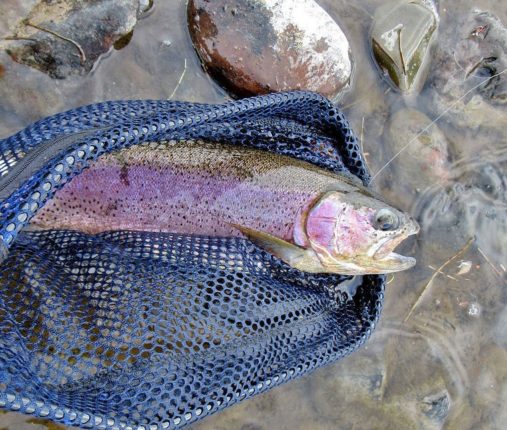Why do people fish?
All you need is a quick look around to see there are as many reasons to fish as there are anglers. People fish as an excuse to go to unique settings (think largemouth bass fishing in Mexico), to be successful in challenging situations (think Railroad Ranch on the Henry’s Fork in Idaho) or to catch one’s first fish (think new angler going to First Dam on the Logan River).
One aspect of all these trips, however, is that catching a big fish can make the outing more enjoyable. So the follow-up question is what makes a fish big?
The most important driver of fish size is species. The largest cutthroat trout caught by an angler was 41 pounds. This is an order of magnitude smaller than the biggest rod-and-reel-caught white sturgeon that weighed in at 468 pounds. In our area, we need to temper expectations as the two species most likely to exceed 15 pounds are lake trout and carp.
A consistent relationship among all fish species is they get much heavier as they get longer. That is because length is measured along a single dimension, while weight is measured in three dimensions: length, height and width. As a result the weight of a trout can double as their length increases from 20 to 25 inches.
Most big freshwater fish are found in lakes. This is because fish in still waters aren’t required to fight a current so can grow fat. Lakes in this region are often very productive as the nutrients that run off the land promote the growth of vegetation, macroinvertebrates and forage fish.
How big a fish is in a river can be is often determined by how they move. The best example of this is anadromy. That word describes the migratory pattern where juvenile fish migrate from freshwater to saltwater, and then years later as adults, migrate back from the ocean to spawn in freshwater. While salmon are the best example this strategy, sturgeon, shad and lampreys are all anadromous fish.
Fish movements in river can be adfluvial. This term describes a fish that spends most of its life in a lake but moves to rivers to spawn. An example is wild cutthroat trout in streams that grew up in Bear Lake. In contrast, fluvial fish live out most their lives in big rivers but spawn in smaller rivers. The Bear River has larger cutthroat trout (16 to 20 inches) that follow this pattern. This movement among rivers has become a difficult strategy as water diversions often block trout movement into smaller streams.
So how does an angler determine a fish is big? Unless you fish bass tournaments, largeness is defined by length, not weight.
A quantitative approach for evaluating fish size is to compare a captured fish length to the length of the world record fish. Using this system, a quality fish is defined as 40 percent of the world-record length, a preferred fish is 50 percent of the world-record length, a memorable fish is 65 percent and a trophy is 80 percent of the world-record length.
Applying this to rainbow trout means a quality fish is 16 inches long, a preferred fish is 20 inches long, a memorable fish is 25 inches long and a trophy fish is 30 inches long. Using this scale to judge the rainbow trout I have caught (excluding steelhead) would mean I have never caught a trophy rainbow trout, but that I have caught a dozen or so memorable fish in my life — and, yes, I can remember each of these fish.
This same scale applied to largemouth bass results in a quality fish being 12 inches long, 15 inches is the preferred length, 20 inches is a memorable fish and 24 inches is a trophy.
The value of understanding what anglers consider to be large is regulations can then be tailored to produce fish of that dimension. In Utah, the most common size exception to the general trout regulation is a slot limit where no fish between 15 and 22 inches can be kept. In Idaho, that regulation is no fish less than 20 inches can be kept. These regulations clearly define a management objective — produce more preferred and memorable size trout.
In using different regulations it is possible to produce fish of different sizes at different locations. That allows me to take my kids places where they catch a bunch of 12-inch trout while still maintaining some streams and lakes where I might stumble into a trophy fish.
